Word Of The Day: Potlatch
Word of the Day: potlatch
n. An opulent ceremonial feast (among certain North American Indian peoples of the north-west coast) at which possessions are given away or destroyed to display wealth or enhance prestige

Image: “Klallam people at Port Townsend” by James Gilchrist Swan. Public Domain via Wikimedia Commons
More Posts from Philosophical-amoeba and Others
Word of the Day: philodox
n. A person who loves or vehemently propounds his or her own opinions; a dogmatic or argumentative person

Image: “Savonarola Preaching Against Prodigality” by Ludwig von Langenmantel. Public Domain via Wikimedia Commons


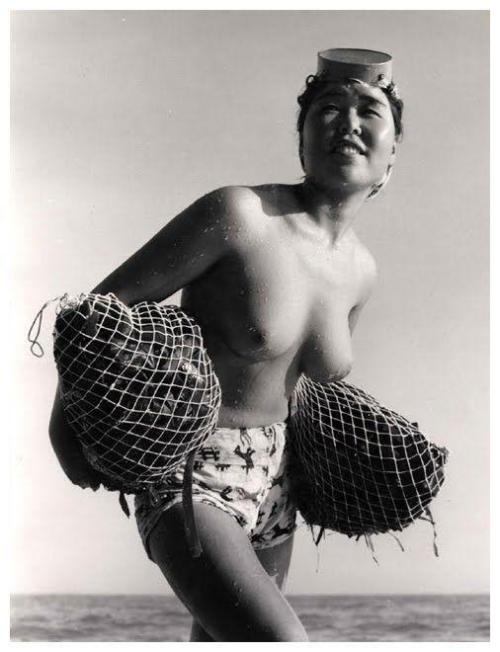


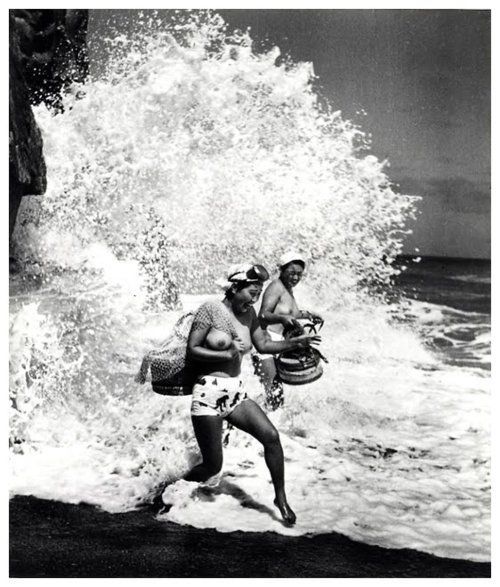
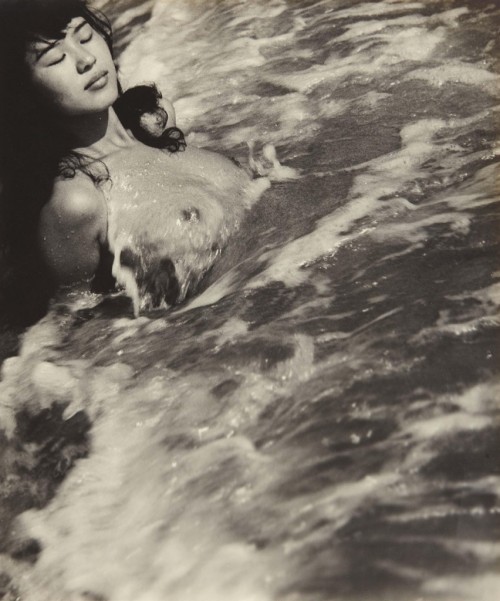
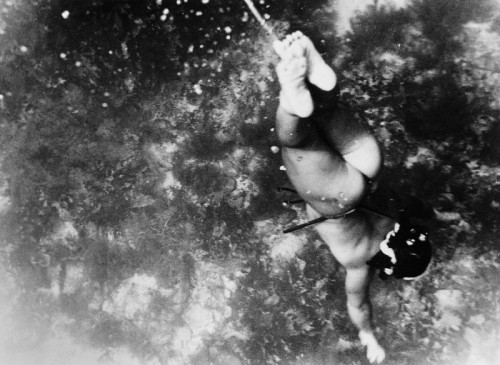
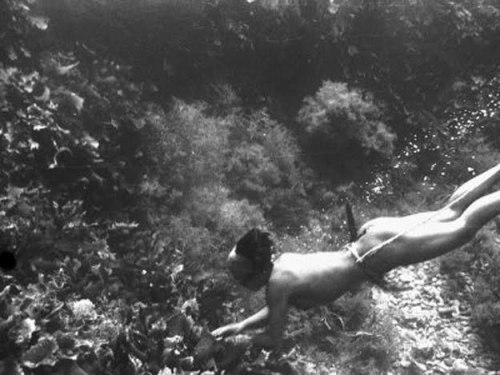
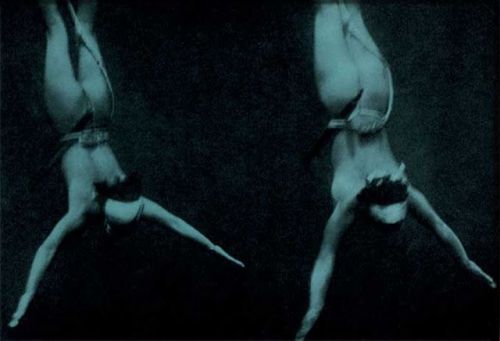
The Last Japanese Mermaids
For nearly two thousand years, Japanese women living in coastal fishing villages made a remarkable livelihood hunting the ocean for oysters and abalone, a sea snail that produces pearls. They are known as Ama. The few women left still make their living by filling their lungs with air and diving for long periods of time deep into the Pacific ocean, with nothing more than a mask and flippers.
In the mid 20th century, Iwase Yoshiyuki returned to the fishing village where he grew up and photographed these women when the unusual profession was still very much alive. After graduating from law school, Yoshiyuki had been given an early Kodak camera and found himself drawn to the ancient tradition of the ama divers in his hometown. His photographs are thought to be the only comprehensive documentation of the near-extinct tradition in existence

E H Shepard illustration from Now we are six by A A Milne

Photograph of the XS-1 in Flight
On October 14, 1947, Captain Charles “Chuck” Yeager became the first human to break the sound barrier during powered level flight while flying the experimental Bell X-1 aircraft.
File Unit: X-1 Photographs, 12/11/1946 - 10/21/1947. Series: Flight Test Project Files, ca. 1945 - ca. 1959. Record Group 255: Records of the National Aeronautics and Space Administration, 1903 - 2006 .

Photograph of Captain Charles E. Yeager, 5/1948
Read Chuck Yeager’s notes from the moment that he broke the sound barrier:
“The needle of the machmeter fluctuated at this reading momentarily, then passed off the scale. Assuming that the off scale reading remained linear, it is estimated that 1.05 Mach i was attained at this time.”

Pilot’s Notes from the Ninth Powered Flight of the XS-1 (First supersonic flight)
Read more Pilot’s notes from these test flights in the X-1 Correspondence file in the National Archives catalog.
Jumps, Explained
So, going by the tags on my recent jump gifsets, the difference between jumps is apparently still a source of great bewilderment for some people. Now I could link you to some excellent posts on the topic, but since I am, as usual, an extra lil piece of dirt with too much work to do and a lifetime’s worth of procrastination, I’ve decided to put together my own layman’s guide to identifying figure skating jumps (stressed on the layman part).
First, here be a flowchart, since everybody loves flowcharts, right?

If the flowchart works as intended and you can now tell the jumps apart, great! If you need a bit more explanation and illustration, read on.
Keep reading










Pride and Prejudice by Jane Austen Illustrated by Charles E Brock with an introduction by Austin Dobson London Macmillan and Co Limited 1895 / 1901 452 pages + ads, all page edges gilt, measures 187mm x 130mm
An attractive copy of a classic illustrated edition in the publishers salmon coloured cloth with swirling art nouveau design covers

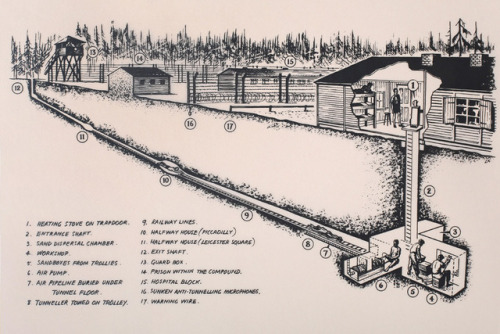
March 24th 1944: The ‘Great Escape’
On this day in 1944, a group of Allied prisoners of war staged a daring escape attempt from the German prisoner of war camp at Stalag Luft III. This camp, located in what is now Poland, held captured Allied pilots mostly from Britain and the United States. In 1943, an Escape Committee under the leadership of Squadron Leader Roger Bushell of the RAF, supervised prisoners surreptitiously digging three 30 foot tunnels out of the camp, which they nicknamed ‘Tom’, ‘Dick’ and ‘Harry’. The tunnels led to woods beyond the camp and were remarkably sophisticated - lined with wood, and equipped with rudimentary ventilation and electric lighting. The successful construction of the tunnels was particularly impressive as the Stalag Luft III camp was designed to make it extremely difficult to tunnel out as the barracks were raised and the area had a sandy subsoil. ‘Tom’ was discovered by the Germans in September 1943, and ‘Dick’ was abandoned to be used as a dirt depository, leaving ‘Harry’ as the prisoners’ only hope. By the time of the escape, American prisoners who had assisted in tunneling had been relocated to a different compound, making the escapeees mostly British and Commonwealth citizens. 200 airmen had planned to make their escape through the ‘Harry’ tunnel, but on the night of March 24th 1944, only 76 managed to escape the camp before they were discovered by the guards. However, only three of the escapees - Norwegians Per Bergsland and Jens Müller and Dutchman Bram van der Stok - found their freedom. The remaining 73 were recaptured, and 50 of them, including Bushell, were executed by the Gestapo on Adolf Hitler’s orders, while the rest were sent to other camps. While the escape was generally a failure, it helped boost morale among prisoners of war, and has become enshrined in popular memory due to its fictionalised depiction in the 1963 film The Great Escape.
“Three bloody deep, bloody long tunnels will be dug – Tom, Dick, and Harry. One will succeed!” - Roger Bushell
Largest Batch of Earth-size, Habitable Zone Planets
Our Spitzer Space Telescope has revealed the first known system of seven Earth-size planets around a single star. Three of these planets are firmly located in an area called the habitable zone, where liquid water is most likely to exist on a rocky planet.
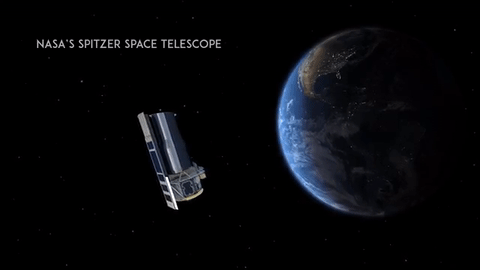
This exoplanet system is called TRAPPIST-1, named for The Transiting Planets and Planetesimals Small Telescope (TRAPPIST) in Chile. In May 2016, researchers using TRAPPIST announced they had discovered three planets in the system.

Assisted by several ground-based telescopes, Spitzer confirmed the existence of two of these planets and discovered five additional ones, increasing the number of known planets in the system to seven.
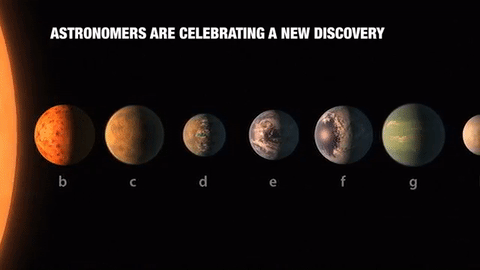
This is the FIRST time three terrestrial planets have been found in the habitable zone of a star, and this is the FIRST time we have been able to measure both the masses and the radius for habitable zone Earth-sized planets.
All of these seven planets could have liquid water, key to life as we know it, under the right atmospheric conditions, but the chances are highest with the three in the habitable zone.

At about 40 light-years (235 trillion miles) from Earth, the system of planets is relatively close to us, in the constellation Aquarius. Because they are located outside of our solar system, these planets are scientifically known as exoplanets. To clarify, exoplanets are planets outside our solar system that orbit a sun-like star.

In this animation, you can see the planets orbiting the star, with the green area representing the famous habitable zone, defined as the range of distance to the star for which an Earth-like planet is the most likely to harbor abundant liquid water on its surface. Planets e, f and g fall in the habitable zone of the star.
Using Spitzer data, the team precisely measured the sizes of the seven planets and developed first estimates of the masses of six of them. The mass of the seventh and farthest exoplanet has not yet been estimated.

For comparison…if our sun was the size of a basketball, the TRAPPIST-1 star would be the size of a golf ball.
Based on their densities, all of the TRAPPIST-1 planets are likely to be rocky. Further observations will not only help determine whether they are rich in water, but also possibly reveal whether any could have liquid water on their surfaces.
The sun at the center of this system is classified as an ultra-cool dwarf and is so cool that liquid water could survive on planets orbiting very close to it, closer than is possible on planets in our solar system. All seven of the TRAPPIST-1 planetary orbits are closer to their host star than Mercury is to our sun.

The planets also are very close to each other. How close? Well, if a person was standing on one of the planet’s surface, they could gaze up and potentially see geological features or clouds of neighboring worlds, which would sometimes appear larger than the moon in Earth’s sky.

The planets may also be tidally-locked to their star, which means the same side of the planet is always facing the star, therefore each side is either perpetual day or night. This could mean they have weather patterns totally unlike those on Earth, such as strong wind blowing from the day side to the night side, and extreme temperature changes.

Because most TRAPPIST-1 planets are likely to be rocky, and they are very close to one another, scientists view the Galilean moons of Jupiter – lo, Europa, Callisto, Ganymede – as good comparisons in our solar system. All of these moons are also tidally locked to Jupiter. The TRAPPIST-1 star is only slightly wider than Jupiter, yet much warmer.
How Did the Spitzer Space Telescope Detect this System?
Spitzer, an infrared telescope that trails Earth as it orbits the sun, was well-suited for studying TRAPPIST-1 because the star glows brightest in infrared light, whose wavelengths are longer than the eye can see. Spitzer is uniquely positioned in its orbit to observe enough crossing (aka transits) of the planets in front of the host star to reveal the complex architecture of the system.

Every time a planet passes by, or transits, a star, it blocks out some light. Spitzer measured the dips in light and based on how big the dip, you can determine the size of the planet. The timing of the transits tells you how long it takes for the planet to orbit the star.

The TRAPPIST-1 system provides one of the best opportunities in the next decade to study the atmospheres around Earth-size planets. Spitzer, Hubble and Kepler will help astronomers plan for follow-up studies using our upcoming James Webb Space Telescope, launching in 2018. With much greater sensitivity, Webb will be able to detect the chemical fingerprints of water, methane, oxygen, ozone and other components of a planet’s atmosphere.
At 40 light-years away, humans won’t be visiting this system in person anytime soon…that said…this poster can help us imagine what it would be like:

Make sure to follow us on Tumblr for your regular dose of space: http://nasa.tumblr.com

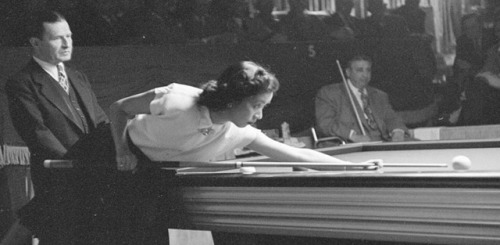





“Men want to beat me. I play men, six, seven hours a day. Men… they do not beat me.”
- Masako “Katsy” Katsura, first woman to compete for a world’s title in billiards
The “First Lady of Billiards” learned from her brother-in-law and in the 50s became Japan’s only female billiards pro. She paved the way for women to come, then left the spotlight and lived a quiet life. She died in 1995.


Timbuktu was a center of the manuscript trade, with traders bringing Islamic texts from all over the Muslim world. Despite occupations and invasions of all kinds since then, scholars managed to preserve and even restore hundreds of thousands of manuscripts dating from the 13th century.
But that changed when militant Islamists backed by al-Qaida arrived in 2012.
The Bad-Ass Librarians of Timbuktu tells the story of librarian Abdel Kader Haidara, who organized and oversaw a secret plot to smuggle hundreds of thousands of medieval manuscripts out of Timbuktu before they could be destroyed by Islamist rebels.
Hear author Joshua Hammer tell the story here.
– Petra
-
 fourhorsemendelhi liked this · 8 years ago
fourhorsemendelhi liked this · 8 years ago -
 ivyonthefence reblogged this · 8 years ago
ivyonthefence reblogged this · 8 years ago -
 thujafantastica liked this · 8 years ago
thujafantastica liked this · 8 years ago -
 porttownsendboilerroom reblogged this · 9 years ago
porttownsendboilerroom reblogged this · 9 years ago -
 wordswordswordswordswords-blog liked this · 9 years ago
wordswordswordswordswords-blog liked this · 9 years ago -
 comingfullyalive-blog liked this · 9 years ago
comingfullyalive-blog liked this · 9 years ago -
 raunasiili-blog liked this · 9 years ago
raunasiili-blog liked this · 9 years ago -
 jester-knyght liked this · 9 years ago
jester-knyght liked this · 9 years ago -
 pil-noticeboard liked this · 9 years ago
pil-noticeboard liked this · 9 years ago -
 kaospersona liked this · 9 years ago
kaospersona liked this · 9 years ago -
 guthrun liked this · 9 years ago
guthrun liked this · 9 years ago -
 ashlee liked this · 9 years ago
ashlee liked this · 9 years ago -
 texasdreamer01 reblogged this · 9 years ago
texasdreamer01 reblogged this · 9 years ago -
 texasdreamer01 liked this · 9 years ago
texasdreamer01 liked this · 9 years ago -
 cognitivelyadvancedzygote liked this · 9 years ago
cognitivelyadvancedzygote liked this · 9 years ago -
 apartmolecules liked this · 9 years ago
apartmolecules liked this · 9 years ago -
 researchstoragebmez liked this · 9 years ago
researchstoragebmez liked this · 9 years ago -
 hello-big-dreamer reblogged this · 9 years ago
hello-big-dreamer reblogged this · 9 years ago -
 creatureofrevelation liked this · 9 years ago
creatureofrevelation liked this · 9 years ago -
 idroolinmysleep liked this · 9 years ago
idroolinmysleep liked this · 9 years ago -
 jotun-philosopher reblogged this · 9 years ago
jotun-philosopher reblogged this · 9 years ago -
 stephenhmfurlong liked this · 9 years ago
stephenhmfurlong liked this · 9 years ago -
 tree-whisper reblogged this · 9 years ago
tree-whisper reblogged this · 9 years ago -
 tree-whisper liked this · 9 years ago
tree-whisper liked this · 9 years ago -
 divineserendipities liked this · 9 years ago
divineserendipities liked this · 9 years ago -
 divineserendipities reblogged this · 9 years ago
divineserendipities reblogged this · 9 years ago -
 gilamunstor liked this · 9 years ago
gilamunstor liked this · 9 years ago -
 swedishmoon liked this · 9 years ago
swedishmoon liked this · 9 years ago -
 evenlighthasweight reblogged this · 9 years ago
evenlighthasweight reblogged this · 9 years ago -
 evenlighthasweight liked this · 9 years ago
evenlighthasweight liked this · 9 years ago -
 bromez liked this · 9 years ago
bromez liked this · 9 years ago -
 stegosyntax liked this · 9 years ago
stegosyntax liked this · 9 years ago -
 aitanapeekaboo liked this · 9 years ago
aitanapeekaboo liked this · 9 years ago -
 tumbled674 reblogged this · 9 years ago
tumbled674 reblogged this · 9 years ago -
 philosophical-amoeba reblogged this · 9 years ago
philosophical-amoeba reblogged this · 9 years ago -
 cavalierzee reblogged this · 9 years ago
cavalierzee reblogged this · 9 years ago -
 rafi602 liked this · 9 years ago
rafi602 liked this · 9 years ago -
 todaysdocument liked this · 9 years ago
todaysdocument liked this · 9 years ago -
 laughing-baubo liked this · 9 years ago
laughing-baubo liked this · 9 years ago -
 sour-sadie liked this · 9 years ago
sour-sadie liked this · 9 years ago -
 laabmagazine liked this · 9 years ago
laabmagazine liked this · 9 years ago -
 ilunado liked this · 9 years ago
ilunado liked this · 9 years ago -
 glendathegoodone reblogged this · 9 years ago
glendathegoodone reblogged this · 9 years ago -
 glendathegoodone liked this · 9 years ago
glendathegoodone liked this · 9 years ago -
 polymathmadness reblogged this · 9 years ago
polymathmadness reblogged this · 9 years ago
A reblog of nerdy and quirky stuff that pique my interest.
291 posts